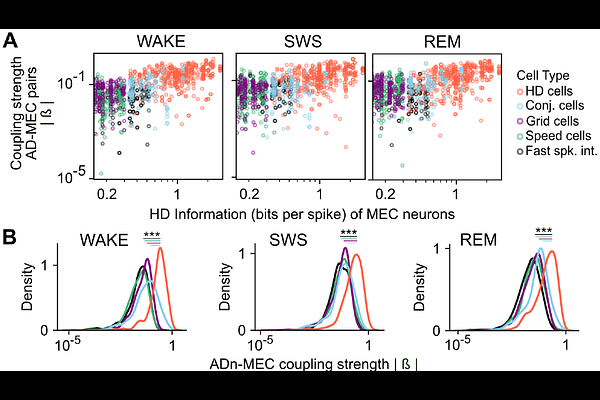Coherent thalamic inputs organize head direction signal in the medial entorhinal cortex

Coherent thalamic inputs organize head direction signal in the medial entorhinal cortex
Vite, G. R.; Ding, M.; Peyrache, A.
AbstractSuccessful navigation relies on signals that remain stable despite environmental changes. This stability can arise by constraining neuronal activity to low-dimensional subspaces. During sleep, when external input is reduced, pairwise coordination persists in the spatial navigation system, as observed for head-direction (HD) cells of the anterodorsal nucleus (ADn) and grid cells of the medial entorhinal cortex (MEC). As ADn is crucial for spatial representation in the MEC, we hypothesized that coherent HD input underlies MEC organization. To test this, we performed simultaneous recordings in the ADn and MEC during wakefulness and sleep. We found that HD cell pairs maintained stable coordination across both states, and that MEC cell coordination was partly driven by common inputs from ADn HD cells. These results suggest that MEC activity is shaped, in part, by coherent thalamic HD signals, supporting stable network organization.